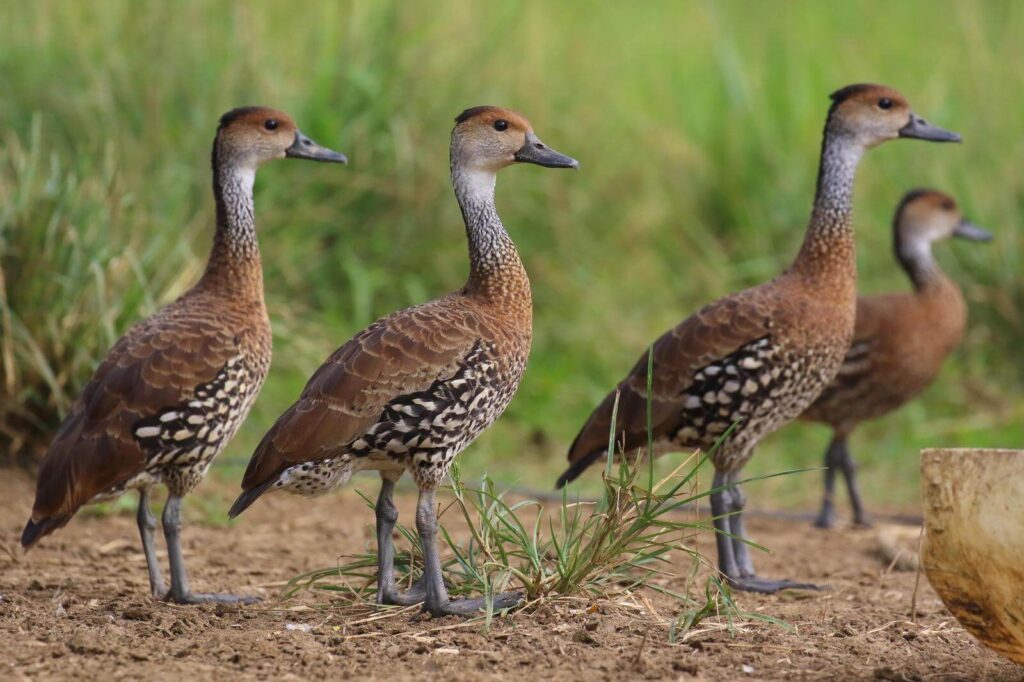West Indian Whistling Duck

Scientific Name
Dendrocygna arborea
Alternative Names
Black-billed Whistling Duck, Cuban Whistling Duck
Measurements
| Feature | Male | Female |
|---|---|---|
| Length | 48–58 cm (19–23 in) | 48–58 cm (19–23 in) |
| Weight | 760–1,240 g (1.68–2.73 lb) | 800–1,320 g (1.76–2.91 lb) |
Status / Origin
This duck is native to the Caribbean and is the largest of all whistling ducks. It breeds in several West Indian islands and is mostly sedentary, staying in the same areas year-round with only short-distance movements.
Identification
A large, dark whistling duck with a long black bill, tall body, and long neck. The face is light brown with a pale front neck. The crown, back, wings, and breast are dark brown to black. The belly and underparts are white with bold black markings. Juveniles look similar but are duller with a less defined belly pattern.
Voice
Like other whistling ducks, it gives a clear whistling call, especially when flying or alarmed. Calls are sharp, high-pitched, and often repeated.
Diet
Mostly plant-based. It feeds at night on seeds, grasses, aquatic plants, and fruits, especially from royal palm trees. It forages in wetlands, mangroves, and swampy forests.
Distribution
Found across the West Indies, with larger populations in the Bahamas. Smaller groups are in Cuba, Jamaica, Cayman Islands, Antigua and Barbuda, Hispaniola, and Puerto Rico. Movements are local and can reach distances of over 100 km.
Habitat
Lives in wooded swamps, freshwater ponds, mangroves, and flooded forests. Often seen perching in trees, which reflects its scientific name.
Breeding
Nests are built in tree cavities, branches, bromeliad clumps, or on the ground under thick vegetation. A typical clutch has 10–16 eggs. Both males and females share nesting areas, and tree-nesting is common.
Behaviour
Mostly active at night and fairly secretive during the day. They perch in trees, rest near water, and stay in small groups. They are shy around humans but may gather in quiet wetland areas.
Wintering
They do not migrate long distances and remain in their home islands throughout the year. Only small local movements occur based on water and food availability.
Conservation / Threats
Classified as a vulnerable species due to hunting, egg collecting, and major loss of wetlands. More than half of Caribbean wetlands are degraded or destroyed by development, pollution, mangrove removal, droughts, and hurricanes. Predators such as introduced mongooses also threaten nests and young birds.
